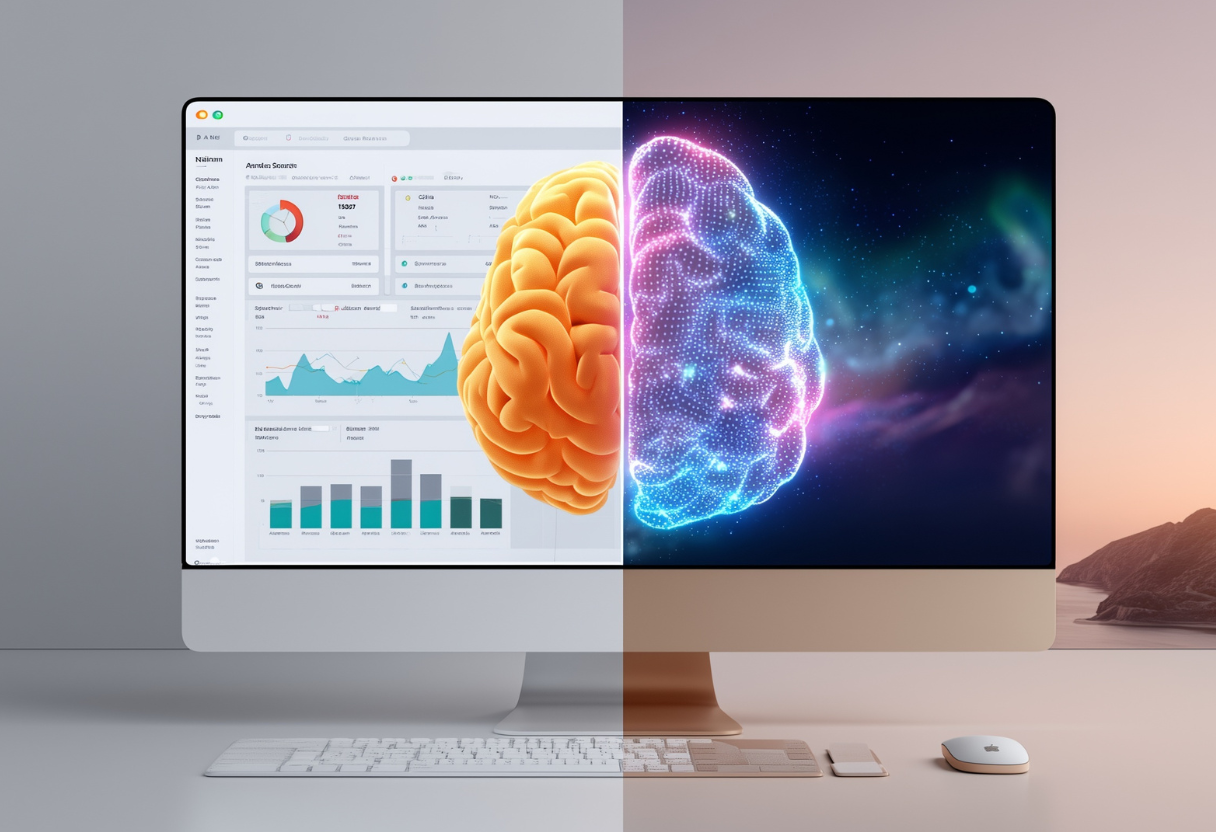What Does Business Automation Mean?

What Does Business Automation and Integrating AI Actually Mean?
— And What a Master’s Thesis Reveals About Their True Impact
If you're a business owner, consultant, or team lead, you've probably heard some version of this advice:
"You need to automate."
"You should integrate AI into your workflows."
"Otherwise, you're falling behind."
But let’s be honest — most people throwing around these terms don’t actually define them. And fewer still can explain where the real ROI comes from.
Recently, we reviewed a Master’s thesis from Micheal Mbunya Foinjia, submitted to the Faculty of Business Economics, as part of a Master of Management degree with a specialization in Data. The paper, titled "Impact of Robotic Process Automation in Business Process Management," offers valuable insight into what business automation really is, how it's being applied, and what kind of returns it can generate.
Let’s break it all down in plain English — and tie it back to what it means for your business.
🤖 What Is Business Automation?
Business automation means using technology to handle tasks that would otherwise require manual effort — consistently, correctly, and at scale.
It’s about setting up systems that do the boring, repetitive stuff without you.
In real life, that means:
- A lead fills out a form → your CRM is updated automatically
- A client books a call → the calendar is updated + a reminder is sent
- An invoice is overdue → a follow-up email goes out without a human touching it
Automation doesn’t just save time — it creates consistency, accuracy, and predictability.
According to Foinjia’s research:
“RPA [Robotic Process Automation] significantly reduces human error, increases efficiency, and lowers operational costs — especially in rule-based tasks.”
💡 What Does "Integrating AI" Actually Mean?
Where automation is about doing, AI is about thinking.
Integrating AI into your business means using systems that can:
- Generate content
- Make predictions
- Interpret data
- Personalize decisions
AI doesn’t just follow instructions. It analyzes, adapts, and improves — often faster than a human could.
Real-world examples:
- AI tools like ChatGPT draft email campaigns or social media posts
- AI chatbots handle complex customer service inquiries, 24/7
- Lead scoring tools prioritize your sales pipeline based on behavioral signals
- AI transcribes meetings, summarizes content, and even suggests next steps
In the thesis, Foinjia notes:
“AI and automation converge most effectively when used to optimize workflows — particularly in areas where large amounts of data need to be interpreted and acted on quickly.”
🔁 Where Automation and AI Work Together
Here’s where things get powerful: combining automation (execution) with AI (intelligence).
This is what Foinjia refers to as the "cognitive extension" of traditional automation — systems that don’t just act, but adapt and optimize based on performance.
Example:
- You record a podcast
- → AI transcribes it, extracts key quotes, and drafts a blog post
- → Automation schedules it, shares it on social, and sends it via email
All without human bottlenecks.
📊 So What’s the ROI of All This?
Foinjia’s thesis highlights four consistent outcomes from integrating automation and AI:
- Time Savings
- Routine tasks are offloaded, freeing teams for higher-value work.
- Accuracy
- Errors drop dramatically when systems — not people — handle data entry and task execution.
- Speed
- Work gets done faster, with less lag between inputs and outputs.
- Scalability
- Businesses can grow without growing headcount at the same rate.
Sound familiar? It’s exactly what we’ve seen firsthand across marketing, operations, and client services.
🧭 So What Should You Do With This?
Here’s how to put these insights into action:
- Start by identifying repetitive tasks. (Scheduling, invoicing, lead capture.)
- Look for areas where decisions are predictable. (Lead routing, content summaries, customer inquiries.)
- Use automation to execute. Use AI to enhance.
- Track your time, output, and accuracy before and after. The ROI will speak for itself.
The smartest businesses aren’t just using AI or automation they’re designing systems that work without constant human intervention.
Final Word: This Isn’t About Hype: It’s About Systems
Automation and AI aren’t just trends — they’re tools that, when used right, change the structure of your business.
Foinjia’s research proves the value. But the real magic happens when you apply it to your workflow, your tools, and your goals.
So don’t just ask “What should I automate?”
Start asking:
“What are we still doing manually and why?”
📘 Want to Dive Deeper?